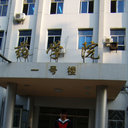Microglia and cyclooxygenase-2: possible therapeutic targets of progesterone for stroke.
Từ khóa
trừu tượng
Previous studies have demonstrated that progesterone (PROG) may be a pleiotropic neuroprotective agent. Although there have been reports about the neurotoxicity of activated microglia and cyclooxygenase-2 (COX-2) in animal models of ischemic stroke, the influence of PROG on the activation of microglia and the expression of COX-2 after stroke has not been examined in detail. In this investigation, we carried out research about the influence of PROG on cultured microglia by detection of the expression of tumor necrosis factor-alpha (TNF-α) and interleukin-1beta (IL-1β) in their supernatant fluid before and after induced with lipopolysaccharide (LPS) or influenced by PROG with Enzyme-Linked Immunosorbent Assay technique in vitro. Moreover, the expression of COX-2 and ionized calcium-binding adapter molecule 1 (Iba1) was also detected in the cortex of rats that underwent permanent middle cerebral artery occlusion and received PROG or vehicle treatment by immunohistochemistry and western blot technique. The results revealed that PROG significantly reduced the expression of TNF-α and IL-1β in cultured microglia after activated with LPS in vitro. In addition, PROG also valuably inhibited the expression of Iba1 and COX-2 after stroke in vivo. These observations raised the possibility that PROG can exert its neuroprotective effects by inhibiting the activation of microglia and the over expression of COX-2 after stroke.



